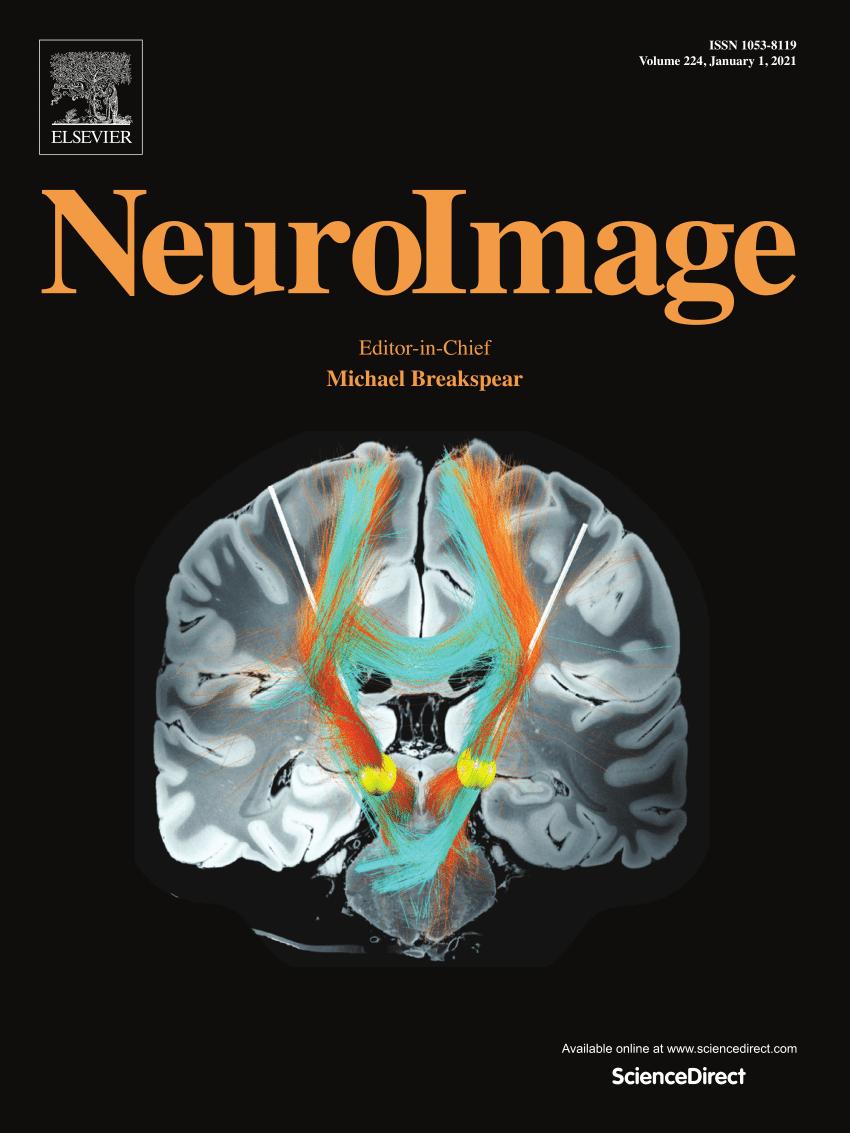自然输入过程中随时间变化的无标度脑动力学
IF 4.5
2区 医学
Q1 NEUROIMAGING
引用次数: 0
摘要
环境过程,如听觉和视觉输入,通常遵循幂律分布,具有随时间变化且不断变化的光谱指数β(t)。然而,目前还不清楚大脑的无标度动态是如何持续响应自然输入的,比如可能交替而不是静态的频谱指数水平。我们的fMRI研究调查了观看电影期间大脑动态的、随时间变化的频谱指数β(t),并使用随时间变化的主体间相关性ISC(t)来评估输入动态在多大程度上反映为受试者早期感觉区域的共同大脑活动。值得注意的是,我们研究了基于时间相关的无标度动力学或β(t)调制的ISC水平。我们获得了三个关键发现:首先,在7特斯拉人类连接组项目数据集中,与静息状态相比,在自然输入期间,大脑的β(t)在视觉和听觉区域显示出独特的时间结构。β(t)与ISC(t)在自然输入时呈显著正相关。第三,根据时间依赖谱指数β(t)从休息到电影的标准差变化对被试进行分组,发现大脑从内在动态到刺激驱动的无标度动态的相对转变调节了共享脑活动(ISC(t))的水平,从而调节了输入对脑活动的印记。观察结果进一步支持了这种调节,两组表现出显著不同的β(t)-ISC(t)相关性,其中在输入期间ISC(t)平均值较高的组在视觉和听觉区域也表现出较高的β(t)-ISC(t)相关性。总之,我们的fMRI研究强调了时间依赖的无标度动力学与ISC之间的正相关关系,其中更高的频谱指数对应于正在进行的视听输入过程中更高程度的共享大脑活动。本文章由计算机程序翻译,如有差异,请以英文原文为准。
Time-dependent scale-free brain dynamics during naturalistic inputs
Environmental processes, such as auditory and visual inputs, often follow power-law distributions with a time-dependent and constantly changing spectral exponent, β(t). However, it remains unclear how the brain’s scale-free dynamics continuously respond to naturalistic inputs, such as by potentially alternating instead of static levels of the spectral exponent. Our fMRI study investigates the brain’s dynamic, time-dependent spectral exponent, β(t), during movie-watching, and uses time-varying inter-subject correlation, ISC(t), to assess the extent to which input dynamics are reflected as shared brain activity across subjects in early sensory regions. Notably, we investigate the level of ISC particularly based on the modulation by time-dependent scale-free dynamics or β(t). We obtained three key findings: First, the brain’s β(t) showed a distinct temporal structure in visual and auditory regions during naturalistic inputs compared to the resting-state, investigated in the 7 Tesla Human Connectome Project dataset. Second, β(t) and ISC(t) were positively correlated during naturalistic inputs. Third, grouping subjects based on the Rest-to-Movie standard deviation change of the time-dependent spectral exponent β(t) revealed that the brain’s relative shift from intrinsic to stimulus-driven scale-free dynamics modulates the level of shared brain activity, or ISC(t), and thus the imprinting of inputs on brain activity. This modulation was further supported by the observation that the two groups displayed significantly different β(t)-ISC(t) correlations, where the group with a higher mean of ISC(t) during inputs also exhibited a higher β(t)-ISC(t) correlation in visual and auditory regions. In summary, our fMRI study underscores a positive relationship between time-dependent scale-free dynamics and ISC, where higher spectral exponents correspond to higher degrees of shared brain activity during ongoing audiovisual inputs.
求助全文
通过发布文献求助,成功后即可免费获取论文全文。
去求助
来源期刊

NeuroImage
医学-核医学
CiteScore
11.30
自引率
10.50%
发文量
809
审稿时长
63 days
期刊介绍:
NeuroImage, a Journal of Brain Function provides a vehicle for communicating important advances in acquiring, analyzing, and modelling neuroimaging data and in applying these techniques to the study of structure-function and brain-behavior relationships. Though the emphasis is on the macroscopic level of human brain organization, meso-and microscopic neuroimaging across all species will be considered if informative for understanding the aforementioned relationships.
 求助内容:
求助内容: 应助结果提醒方式:
应助结果提醒方式:


